
Can-Do Statement about Understanding Popularion Size Statements
- Subject:
- Arts and Humanities
- Languages
- Material Type:
- Interactive
- Provider:
- Michigan Virtual
- Date Added:
- 02/04/2020

Can-Do Statement about Understanding Popularion Size Statements

Can-Do Statement about Recalling How Many People Speak French Globally

Can-Do Statement about Your Education

Can-Do Statement about Your Education and Future Plans

Can-Do Statement about Pop Culture

As some of the foundational texts for beginning readers, fairy tales are a staple of many classrooms. This lesson allows students to engage with fairy tales from different regions around the world and compare important cultural elements of these stories.
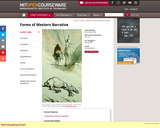
Major narrative texts from diverse Western cultures, beginning with Homer and concluding with at least one film. Emphasis on literary and cultural issues: on the artistic significance of the chosen texts and on their identity as anthropological artifacts whose conventions and assumptions are rooted in particular times, places, and technologies. Syllabus varies, but always includes a sampling of popular culture (folk tales, ballads) as well as some landmark narratives such as the Iliad or the Odyssey, Don Quixote, Anna Karenina, Ulysses, and a classic film. This class will investigate the ways in which the formal aspects of Western storytelling in various media have shaped both fantasies and perceptions, making certain understandings of experience possible through the selection, arrangement, and processing of narrative material. Surveying the field chronologically across the major narrative genres and sub-genres from Homeric epic through the novel and across media to include live performance, film, and video games, we will be examining the ways in which new ideologies and psychological insights become available through the development of various narrative techniques and new technologies. Emphasis will be placed on the generic conventions of story-telling as well as on literary and cultural issues, the role of media and modes of transmission, the artistic significance of the chosen texts and their identity as anthropological artifacts whose conventions and assumptions are rooted in particular times, places, and technologies. Authors will include: Homer, Sophocles, Herodotus, Christian evangelists, Marie de France, Cervantes, La Clos, Poe, Lang, Cocteau, Disney-Pixar, and Maxis-Electronic Arts, with theoretical readings in Propp, Bakhtin, Girard, Freud, and Marx.
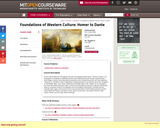
" As we read broadly from throughout the vast chronological period that is "Homer to Dante," we will pepper our readings of individual ancient and medieval texts with broader questions like: what images, themes, and philosophical questions recur through the period; are there distinctly "classical" or "medieval" ways of depicting or addressing them; and what do terms like "Antiquity" or "the Middle Ages" even mean? (What are the Middle Ages in the "middle" of, for example?) Our texts will include adventure tales of travel and self-discovery (Homer's Odyssey and Dante's Inferno); courtroom dramas of vengeance and reconciliation (Aeschylus's Oresteia and the Icelandic NjĚÁls saga); short poems of love and transformation (Ovid's Metamorphoses and the Lais of Marie de France); and epics of war, nation-construction, and empire (Homer's Iliad, Virgil's Aeneid, and the Anglo-Saxon Beowulf)."
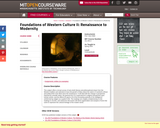
This subject offers a broad survey of texts (both literary and philosophical) drawn from the Western tradition and selected to trace the growth of ideas about the nature of mankind's ethical and political life in the West since the renaissance It will deal with the change in perspective imposed by scientific ideas, the general loss of a supernatural or religious perspective upon human events, and the effects for good or ill of the increasing authority of an intelligence uninformed by religion as a guide to life. The readings are roughly complementary to the readings in 21L001, and classroom discussion will stress appreciation and analysis of texts that came to represent the cultural heritage of the modern world.
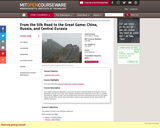
Examines interactions across the Eurasian continent between Russians, Chinese, Mongolian nomads, and Turkic oasis dwellers during the last millennium and a half. As empires rose and fell, religions, trade, and war flowed back and forth continuously across this vast space. Britain and Russia competed for power over Eurasia in the "Great Game" of geopolitics in the nineteenth century, just as China, Russia, and others did in the twentieth century. Today, the fall of the Soviet Union and China's reforms have opened new opportunities for cultural interaction. Topics include: the religious traditions of Central Asian Islam, Buddhism, Christianity, and Confucianism; caravans and travelers like Marco Polo and Rabban Sauma, the first Chinese to travel to the West; and nomadic conquest and imperialist competition, past and present. Source materials include primary documents, travelogues, films, music, and museum visits.
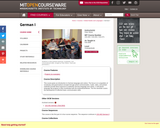
" This course gives an introduction to German language and culture. The focus is on acquisition of vocabulary and grammatical concepts through active communication. Audio, video, and printed materials provide direct exposure to authentic German language and culture. A self-paced language lab program is fully coordinated with the textbook/workbook. The first semester covers the development of effective basic communication skills."
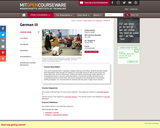
This course expands skills in speaking, reading, listening, and writing. Students develop analytic and interpretative skills through the reading of a full-length drama as well as short prose and poetry (Biermann, Brecht, DĚ_rrenmatt, Tawada and others) and through media selections on contemporary issues in German-speaking cultures. Coursework includes discussions and compositions based on these texts, and review of grammar and development of vocabulary-building strategies. It is recommended for students with two years of high school German.

Development of interpretive skills, using literary texts (B. Brecht, S. Zweig) and contemporary media texts (film, TV broadcasts, Web materials). Discussion and exploration of cultural topics in their current social, political, and historical context via hypermedia documentaries. Further refinement of oral and written expression and expansion of communicative competence in practical everyday situations.
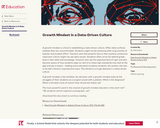
A growth mindset is critical in establishing a data-driven culture. Often data surfaces realities that are uncomfortable. Students might not be achieving after long months of teacher and student effort. Teachers who feel powerful due to their positive, productive classroom culture might not see data results. Students often arrive far behind grade-level in their skills and knowledge. Teachers who see the expected level of rigor and who become aware of how students align (or don’t) to these high standards may look at the gap and see a chasm – leading some educators to blame students, the system, the test, or be self-critical in unproductive ways. This ailment is a huge obstacle in a data-driven culture.
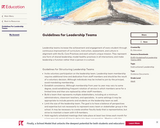
Leadership teams increase the achievement and engagement of every student through continuous improvement of curriculum, instruction, assessment, and culture in alignment with the EL Core Practices and each school’s unique mission. They represent one form of shared leadership; model healthy practices in all interactions; and make leadership a function rather than a person in a school.
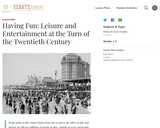
How did Americans "have fun" a century ago? In this lesson, students will learn how Americans spent their leisure time and explore new forms of entertainment that appeared at the turn of the century. In addition, they will learn how transportation and communication improvements made it possible for Americans to travel to new destinations.

Since 1988, the U.S. Government has set aside the period from September 15 to October 15 as National Hispanic Heritage Month to honor the many contributions Hispanic Americans have made and continue to make to the United States of America. Our Teacher's Guide brings together resources created during NEH Summer Seminars and Institutes, lesson plans for K-12 classrooms, and think pieces on events and experiences across Hispanic history and heritage.
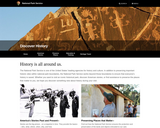
offers educators Park Service resources that help teach about our nation's cultural heritage, and which look at how the NPS is protecting and preserving them. Subjects include archaeology, historic buildings and structures, mapping, military history, and national historic landmarks. The resources may be in the form of learning programs, case studies, lesson plans, teachers' handbooks, and more.
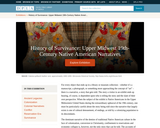
For every object that ends up in a library or museum collection whether its a manucript, a photograph, or something more approaching the concept of art there is a narrative, a story that gets told. The story a visitor to an exhibit ends up hearing, of course, is dependent upon who is telling the story and the slant of their own perspective. When the subject of the exhibit is Native Americans in the Upper Midwestern United States during the extraordinary upheaval of the 19th century, one must be particularly careful about the story being told since the narrative that largely exists is one of cultural denouement, of endings, as told by a colonizing population to its descendants. The dominant narrative of the demise of traditional Native American culture in the face of colonization, conversion to Christianity, confinement to reservations and economic collapse is, however, not the only story that can be told. The accounts of the lives of Native Americans during the 19th century that are told by Native peoples themselves are strikingly different to those recounted in history books, movies, and all too frequently in museums. Rather than narratives solely recounting destruction and demise, Native stories about Native history tend to focus on what White Earth Ojibwe scholar Gerald Vizenor has called survivance a narrative incorporating themes of survival and resistance that insist on the inclusion of the Native presence. The following is an exhibit of resources that can be found within the Digital Public Library of America retold through the lens of Native American survivance in the Minnesota region. Within are a series of objects of both Native and non-Native origin that tell a story of extraordinary culture disruption, change and continuity during 19th c., and how that affects the Native population of Minnesota today. This exhibit was created by the Minnesota Digital Library.
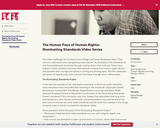
This video challenges the Common Core College and Career Readiness Habit “They come to understand other perspectives and cultures” as described in the standards as only being addressed vicariously through reading about other cultures. Featuring a project in which students interview international refugees from human rights abuses and consider their courage and stories in writing and photography. This film celebrates the power of experiencing other cultures first-hand, through direct relationships.